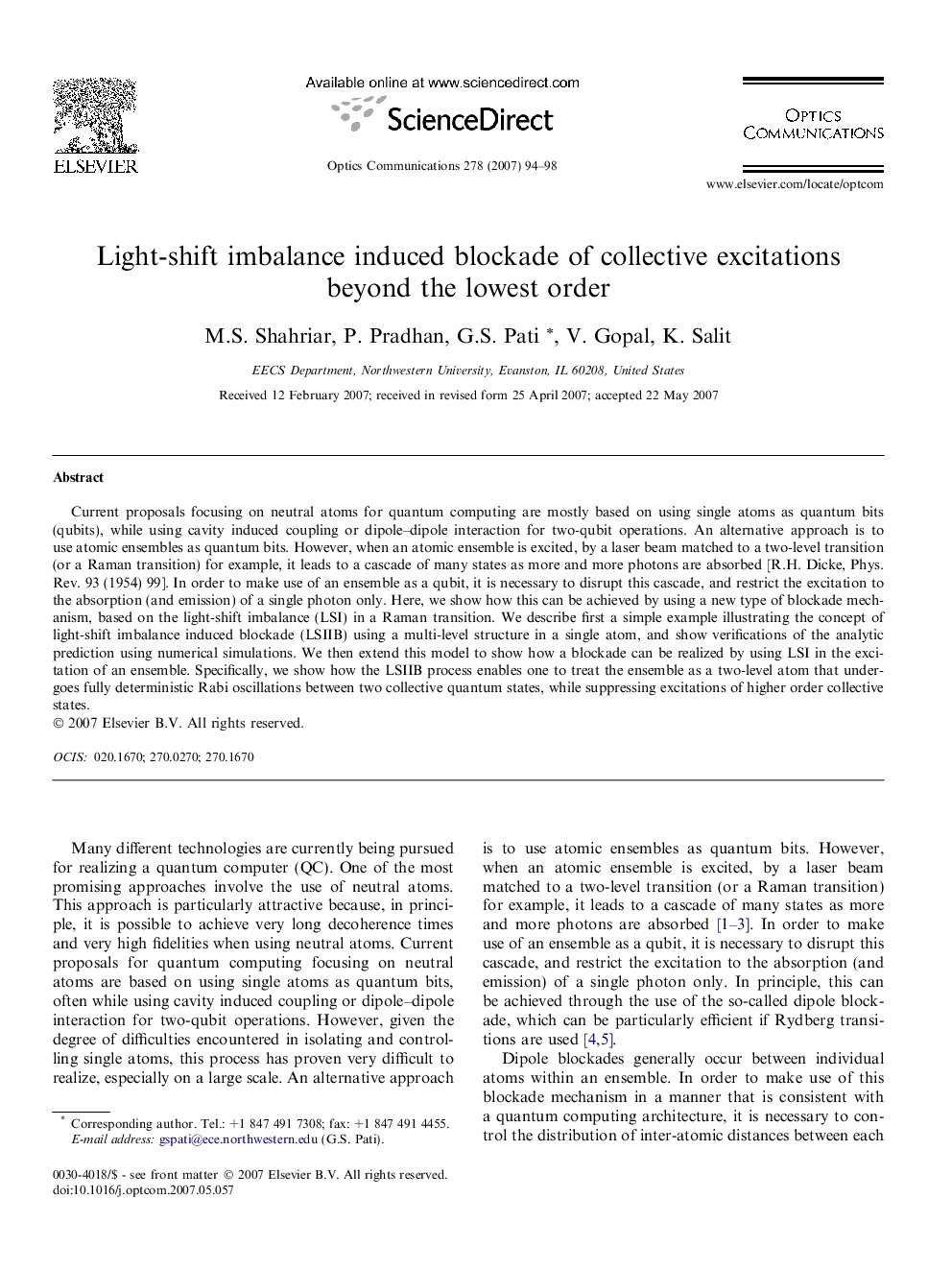| Article ID | Journal | Published Year | Pages | File Type |
|---|---|---|---|---|
| 1541865 | Optics Communications | 2007 | 5 Pages |
Current proposals focusing on neutral atoms for quantum computing are mostly based on using single atoms as quantum bits (qubits), while using cavity induced coupling or dipole–dipole interaction for two-qubit operations. An alternative approach is to use atomic ensembles as quantum bits. However, when an atomic ensemble is excited, by a laser beam matched to a two-level transition (or a Raman transition) for example, it leads to a cascade of many states as more and more photons are absorbed [R.H. Dicke, Phys. Rev. 93 (1954) 99]. In order to make use of an ensemble as a qubit, it is necessary to disrupt this cascade, and restrict the excitation to the absorption (and emission) of a single photon only. Here, we show how this can be achieved by using a new type of blockade mechanism, based on the light-shift imbalance (LSI) in a Raman transition. We describe first a simple example illustrating the concept of light-shift imbalance induced blockade (LSIIB) using a multi-level structure in a single atom, and show verifications of the analytic prediction using numerical simulations. We then extend this model to show how a blockade can be realized by using LSI in the excitation of an ensemble. Specifically, we show how the LSIIB process enables one to treat the ensemble as a two-level atom that undergoes fully deterministic Rabi oscillations between two collective quantum states, while suppressing excitations of higher order collective states.
